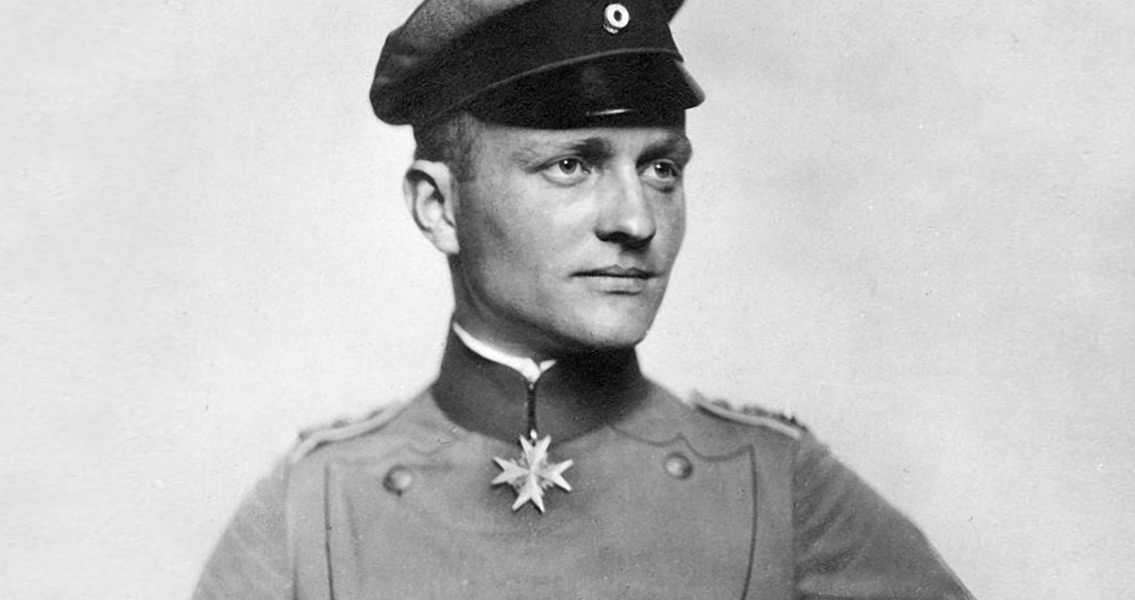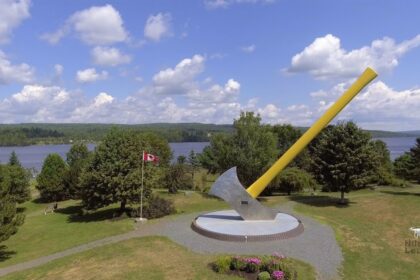Manfred Albrecht Freiherr von Richthofen, also known as the “Red Baron,” was a fighter pilot with the German Air Force during World War I. He is considered the ace-of-aces of the war, being officially credited with 80 air combat victories. Take a look below for 30 more interesting and fascinating facts about Manfred von Richthofen.
1. Originally a cavalryman, Richthofen transferred to the Air Service in 1915, becoming one of the first members of fighter squadron Jagdstaffel 2 in 1916.
2. He quickly distinguished himself as a fighter pilot, and during 1917 became the leader of Jasta 11 and then the larger fighter wing unit Jagdgeschwader 1, better known as “The Flying Circus” because of the bright colors of their aircraft.
3. By 1918, Richthofen was regarded as a national hero in Germany, and respected by his enemies.
4. Richthofen was shot down and killed near Vaux-sur-Somme on April 21, 1918.
5. There has been considerable discussion and debate regarding aspects of his career, especially the circumstances of his death.
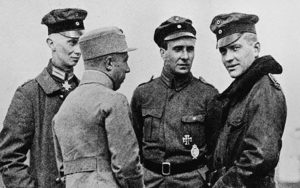
6. He remains one of the most widely known fighter pilots of all time, and has been the subject of many books, films and other media.
7. He was born in Kleinburg, near Breslau, Lower Silesia, now part of the city of Wroclaw, Poland, on May 2, 1892, into a prominent Prussian aristocratic family.
8. His father was Major Albrecht Philipp Karl Julius Freiherr von Richthofen and his mother was Kunigunde von Schickfuss und Neudorff.
9. He had an elder sister, Ilse, and two younger brothers.
10. When he was four years old, Richthofen moved with his family to nearby Schweidnitz.
11. He enjoyed riding horses and hunting as well as gymnastics at school.
12. He excelled at parallel bars and won a number of awards at school.
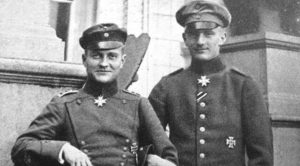
13. He and his brothers, Lothar and Bolko, hunted wild boar, elk, birds and deer.
14. Richthofen began training for the military at the age of 11.
15. He became known as the Red Baron after painting his plane bright red.
16. After shooting down his first place, he ordered a silver cup engraved with the details of the encounter. After having 60 cups made, he stopped as Germany was running out of silver.
17. He shot down 22 British aircraft in April, 1917. On just one day in April, he show down 4 planes, having taken command of a larger squadron.
18. Richthofen was an accurate shot, rather than a skillful pilot. He often used the strategy of attacking his enemies from above, using the Sun’s light to temporarily blind them.
19. Although RAF pilot Roy Brown is credited with finally shooting him down, it has never been fully verified.
20. Richthofen was buried in his family’s grave in Wiesbaden, Germany.
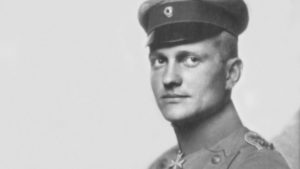
21. His plane’s engine is on display in London’s Science Museum and parts of his plane are in a Canadian military institute.
22. In common with most Allied air officers, Major Blake, who was responsible for Richthofen’s body, regarded the Red Baron with great respect, and he organized a full military funeral, to be conducted by the personnel of No. 3 Squadron AFC.
23. Captain Roy Brown donated the seat of the Fokker triplane in which Richthofen made his final flight to the Royal Canadian Military Institute in 1920.
24. The Royal Canadian Military Institute, in Toronto, apart from the triplane’s seat, also holds a side panel signed by the pilots of Brown’s squadron.
25. The engine of Richthofen’s DR.I was donated to the Imperial War Museum in London, where it’s still on display. The museum also holds his machine guns.
26. The control column of Richthofen’s aircraft can be seen at the Australian War Memorial, in Canberra.
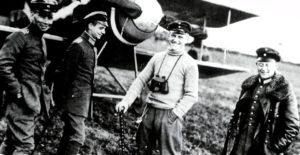
27. For decades after World War I, some authors questioned whether Richthofen had achieved 80 victories, insisting that his record was exaggerated for propaganda purposes. Some claimed that he took credit for aircraft downed by his squadron.
28. In fact, Richthofen’s victories are unusually well documented. A full list of the aircraft the Red Baron was credited with shooting down was published as early as 1958, with documented RFC/RAF squadron details, aircraft serial numbers, and the identities of Allied airmen killed or captured. 73 of the 80 listed match recorded British losses.
29. Richthofen’s early victories and the establishment of his reputation coincided with a period of German air superiority, but he achieved many of his successes against a numerically superior enemy, who flew fighter aircraft that were, on the whole, better than his own.
30. During his convalescent leave, Richthofen completed an autobiographic sketch, Der rote Kampfflieger.

